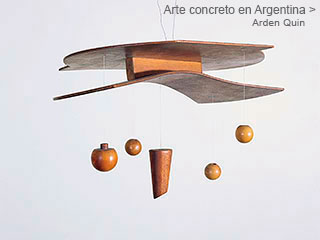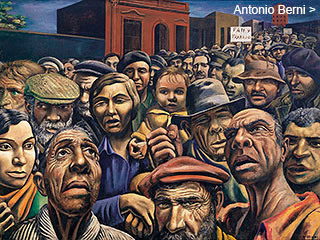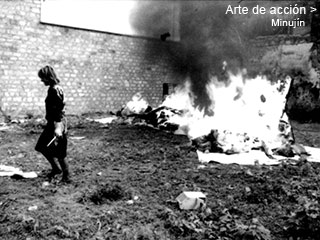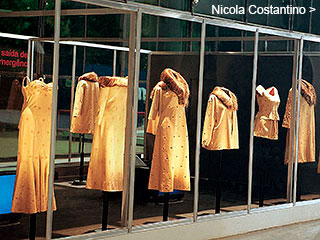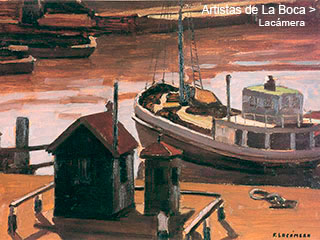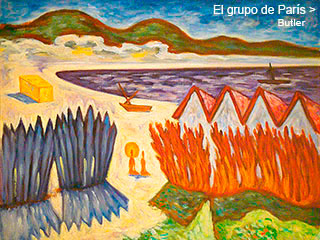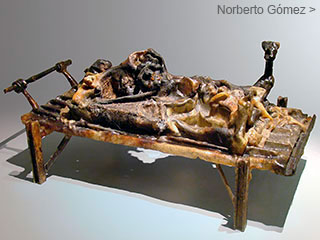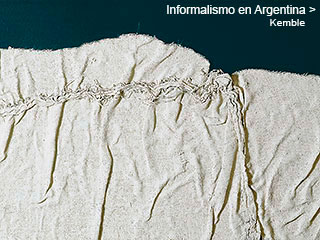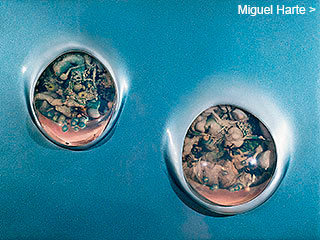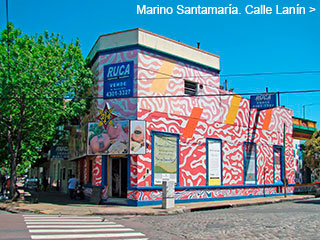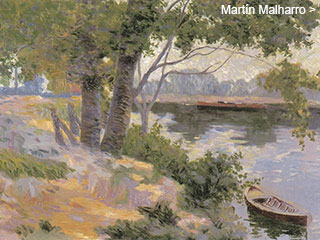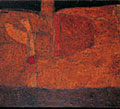Menú
Algunos dossiers
Informalism
in Argentina
in Argentina
by
Jorge López Anaya
August 2003
August 2003
Argentine Informalism incorporated processes which went against the “good taste” of the local practices. Based on the existential poetry of the time, through spontaneous gestures and the use of discarded material, it violated the limits of the traditional artistic genre and opened the road to the concept of the object, the installations and the art of action.
About Informalism
There are several definitions of Informalism. Be it that they come from art critiques involved in the tendency or the artists themselves, the only thing they have in common is the incapacity to cover the entire spectrum of the definition. The term “Informalism” was first coined by the critique Michel Tapié (Albi, 1909 - Paris, 1987); and it stemmed from an exhibition entitled Signifciants de l’Informel, which took place at the Fachetti Studio (Paris) in November 1951, with works of Fautrier, Dubuffet, Michaux, Mathieu, Riopelle and Serpan.
A little afterwards Tapié published Un art autre (A different art). His conception of autre art was about the manifestation that parted from zero, in opposition to the abstract academics and in favor of an art where “only the expression gives orders”. It wasn’t enough to abandon geometry and recur to the free form; on the contrary, it was a must to break away from the plastic arts, in order to take shelter in the “making” without control, in total spontaneity.
The term tachisme used by Charles Estienne, first appeared in 1954, within the context of French critiques. Towards this same period action painting came about, proposed by Harold Rosenberg in 1952. This technique represented a North American art sector founded on the violent expression of the material execution. Lyrical abstraction, tachisme, abstract expressionism, spontaneous gestures, matter painting were proposals that reflected the philosophy of the time (Sarterean Existencialism and Merleau-Ponty Phenomenology), through the commitment of the body with the pictorial action.
The expansion of the Informal tendencies was fast and generalized. Different groups and independent artists in France, Germany, Italy, Japan, Spain, United States and South America leaned towards a style of painting that did not seem to admit national boundaries and only picked up a few of the local characteristics.


